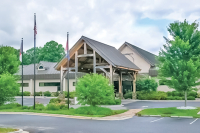Governments get graded
 Journalists responsible for news gathering in a rugged and mountainous four-county (Haywood, Jackson, Macon and Swain), 2,111-square-mile swath of Western North Carolina that happens to contain two sovereign nations, 11 towns, 32 unincorporated communities, 44 townships, 150,000 people, and the most visited national park in the country often rely on local government websites and the accuracy and timeliness of the information contained therein.
Journalists responsible for news gathering in a rugged and mountainous four-county (Haywood, Jackson, Macon and Swain), 2,111-square-mile swath of Western North Carolina that happens to contain two sovereign nations, 11 towns, 32 unincorporated communities, 44 townships, 150,000 people, and the most visited national park in the country often rely on local government websites and the accuracy and timeliness of the information contained therein.
But residents of said region also look to those very same websites to accomplish tasks far more mundane. Paying utility bills, for example.
And as human beings utterly inundated with the omnipresent din of global electronic communication, taxpayers seek brevity and clarity when going online to accomplish something.
Such are the criteria The Smoky Mountain News utilized when examining 11 local governmental websites and evaluating them for their accountability, their capability, and their overall look and feel. On a scale of one to five — with one being the lowest — we graded each one based on three major categories, all with several subcategories:
• Transparency in local government is a hallmark of the American system. For this category, we asked the following: Is there a calendar of events? Is it updated regularly? Are meeting agendas, minutes, and budgets posted timely and archived? Can employees and elected officials (and their contact information) be found quickly? Are local ordinances available, and searchable? What about promptly-posted videos of meetings, and their archives?
• Services are — or should be — a basic feature of any government, and thus of any government website. Accordingly, for this category we tried to find out if bills, taxes, and/or fees could be paid online, if permits, forms, or applications could be downloaded or completed online, and if a robust GIS property mapping application was accessible.
Related Items
• The design of a website carries with it implications that could render all of the previous factors moot — a website is a town or county’s “curb appeal,” and if the navigation, functionality, and mobile compatibility aren’t well-maintained, users will merely glance at it and keep on driving.
In the following stories, you’ll find the results of our analysis — the good, the bad, and the just plain ugly of Western North Carolina’s local government websites.









